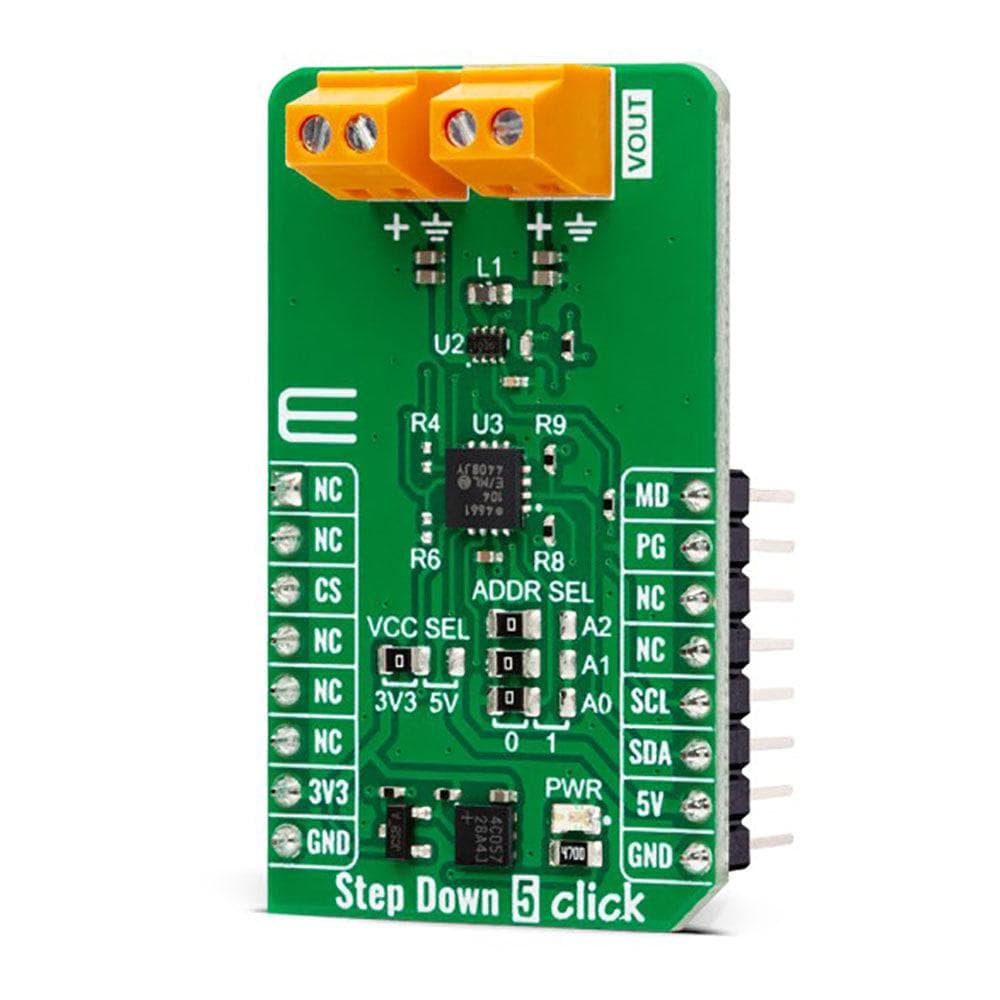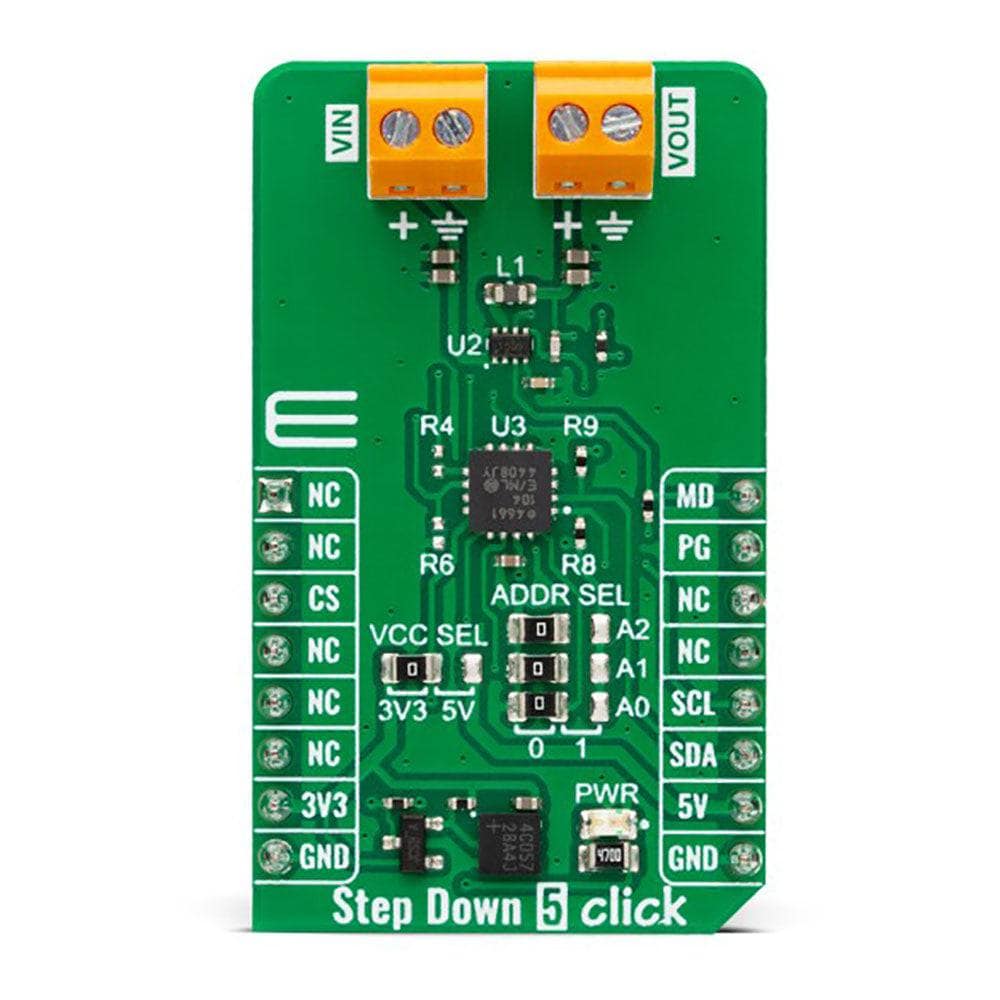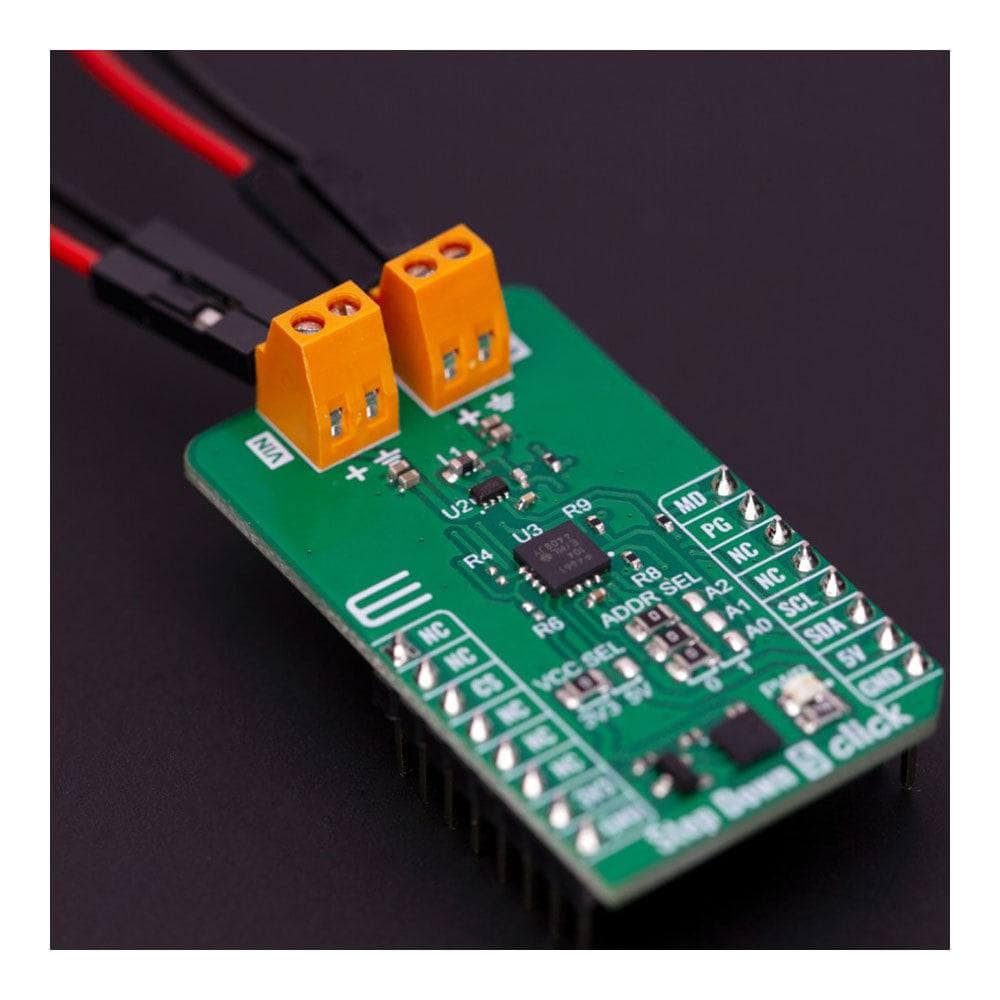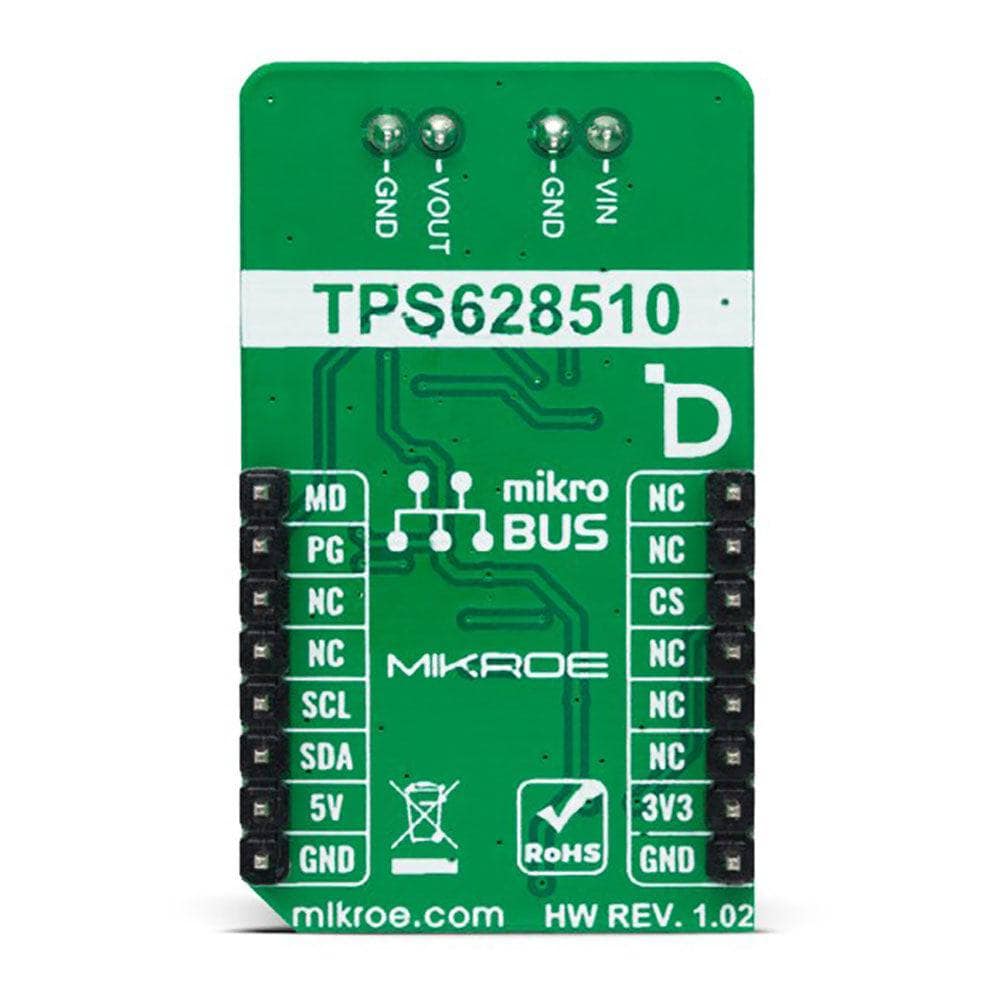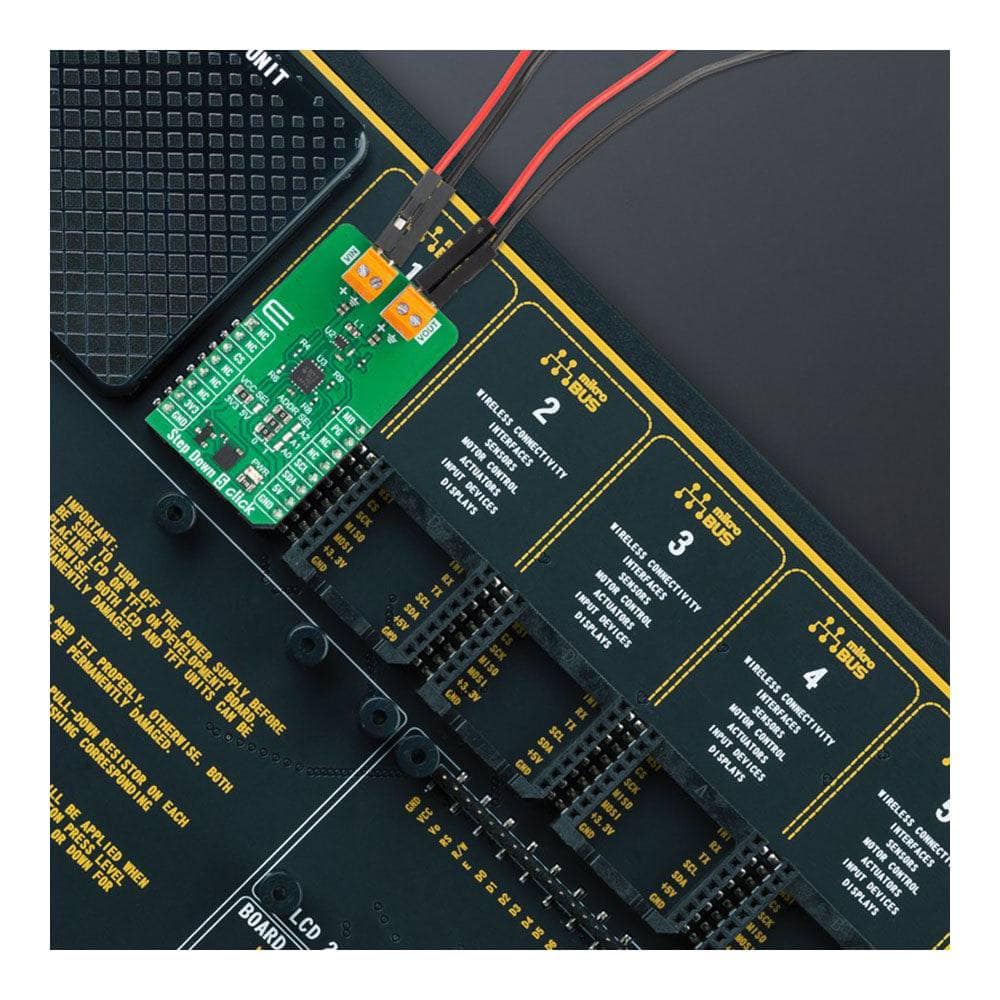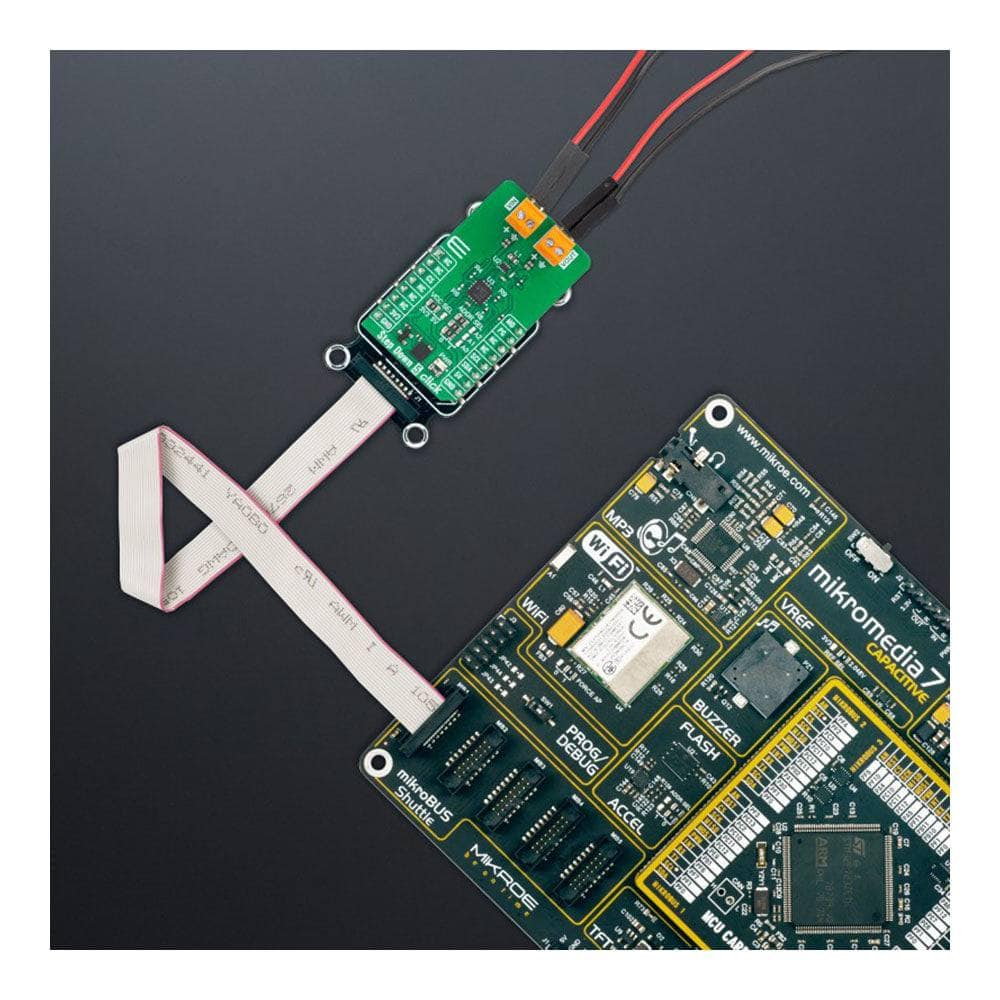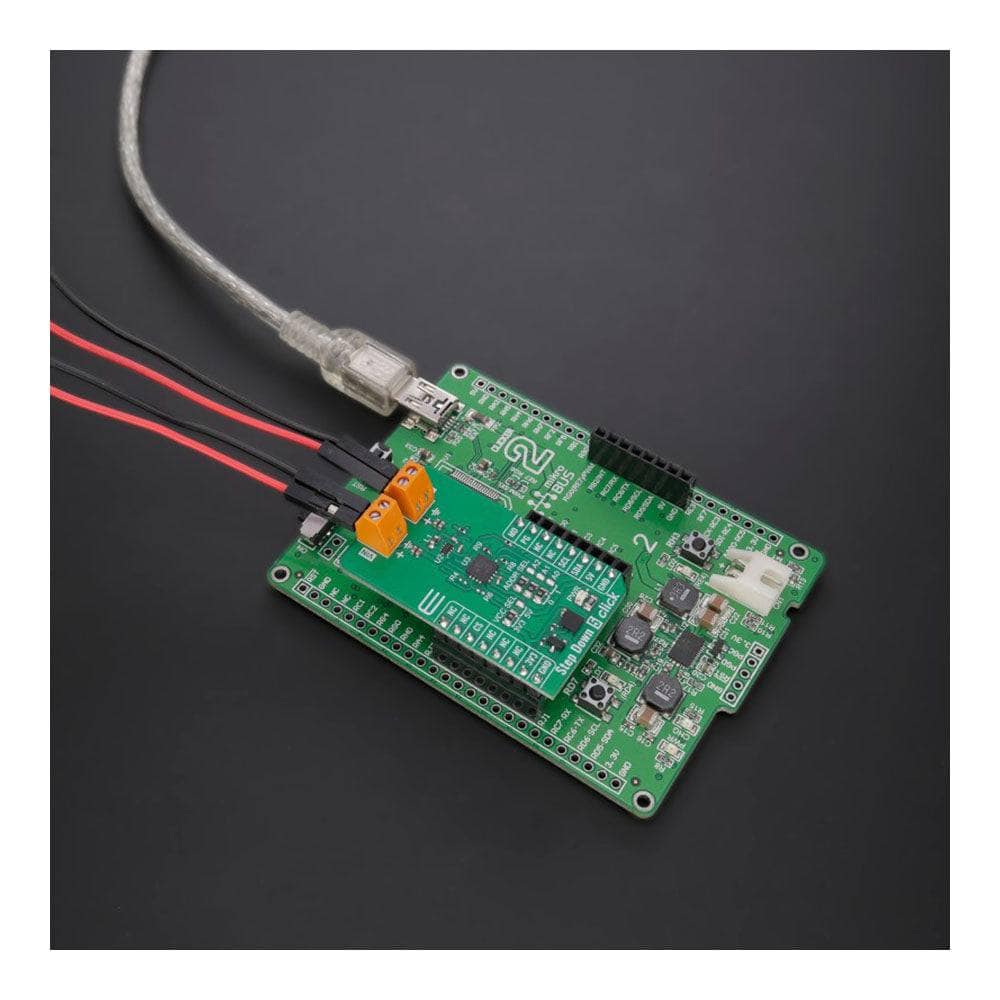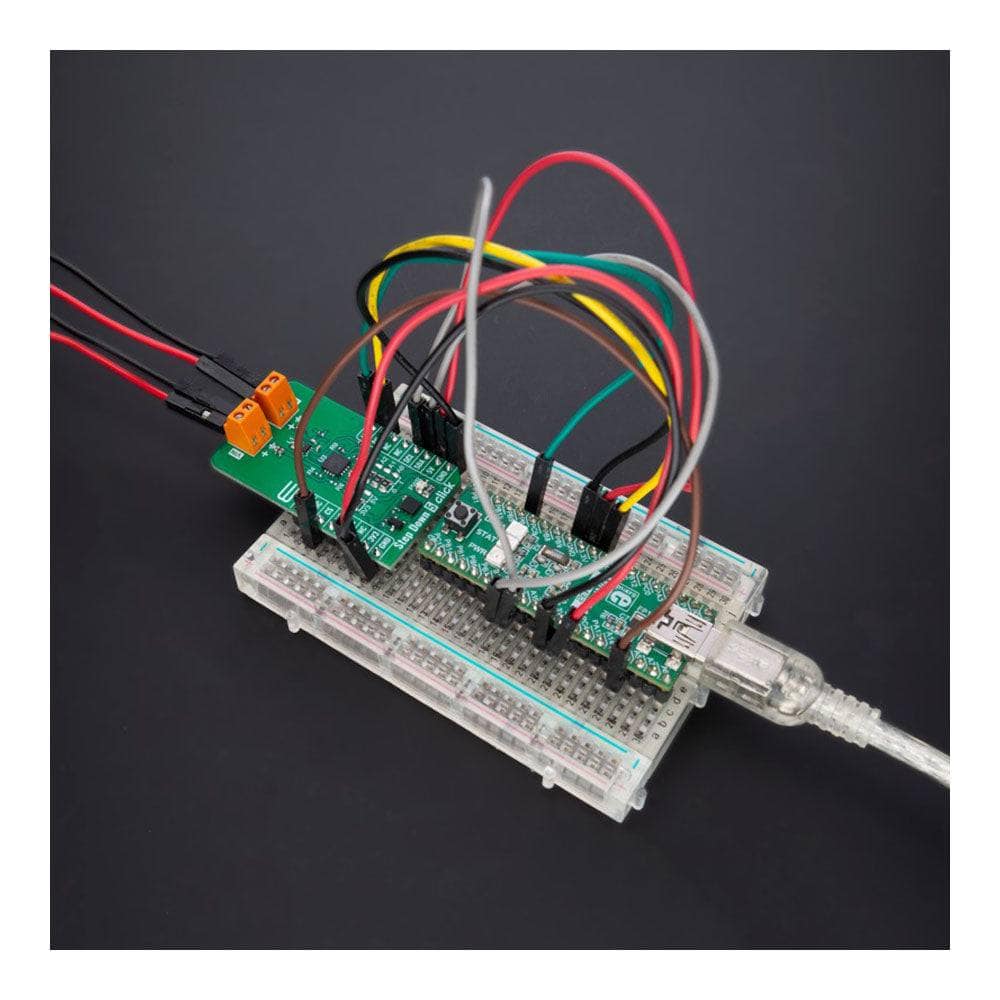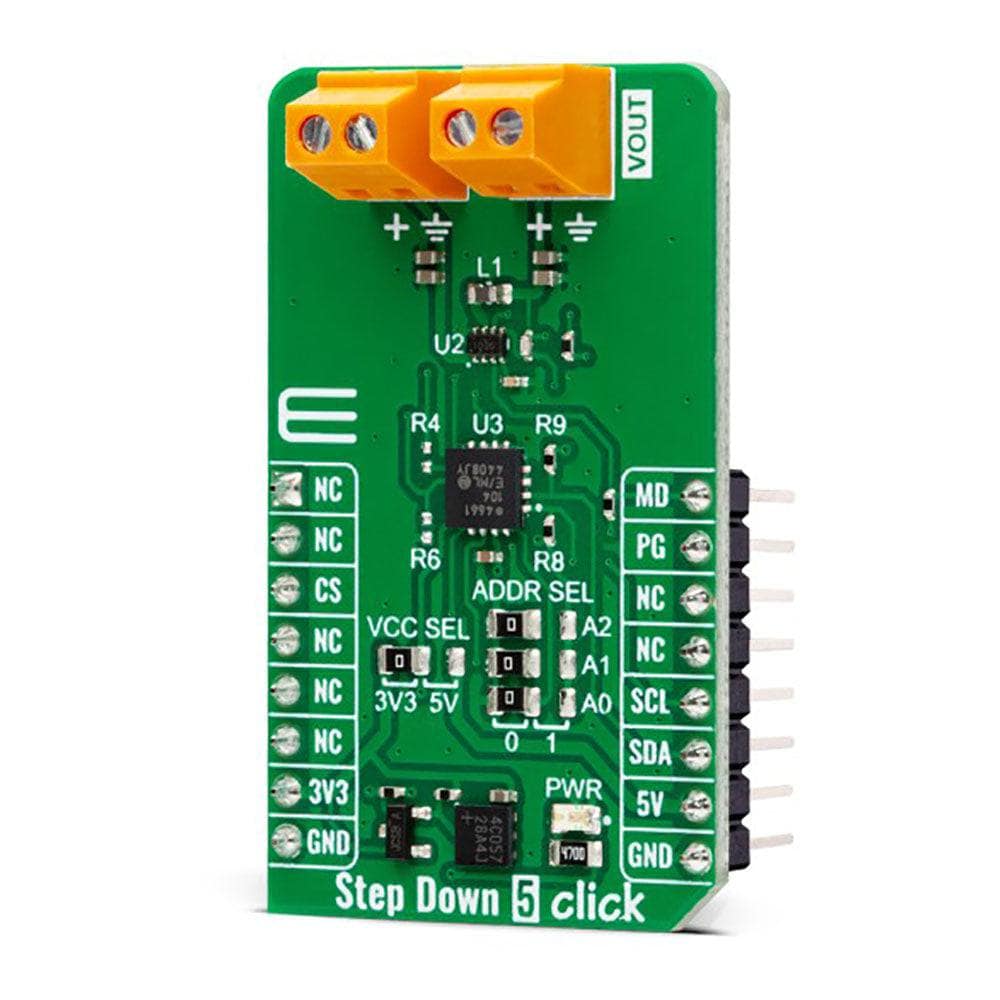
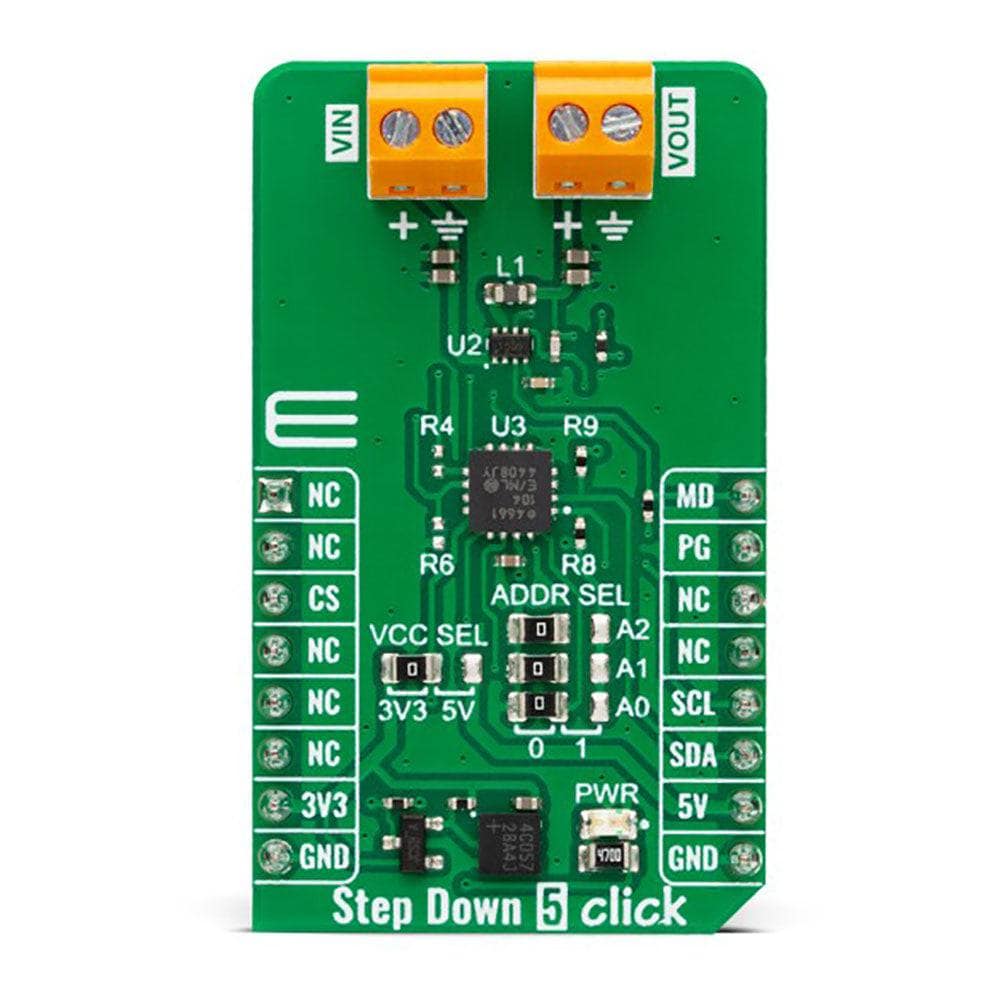
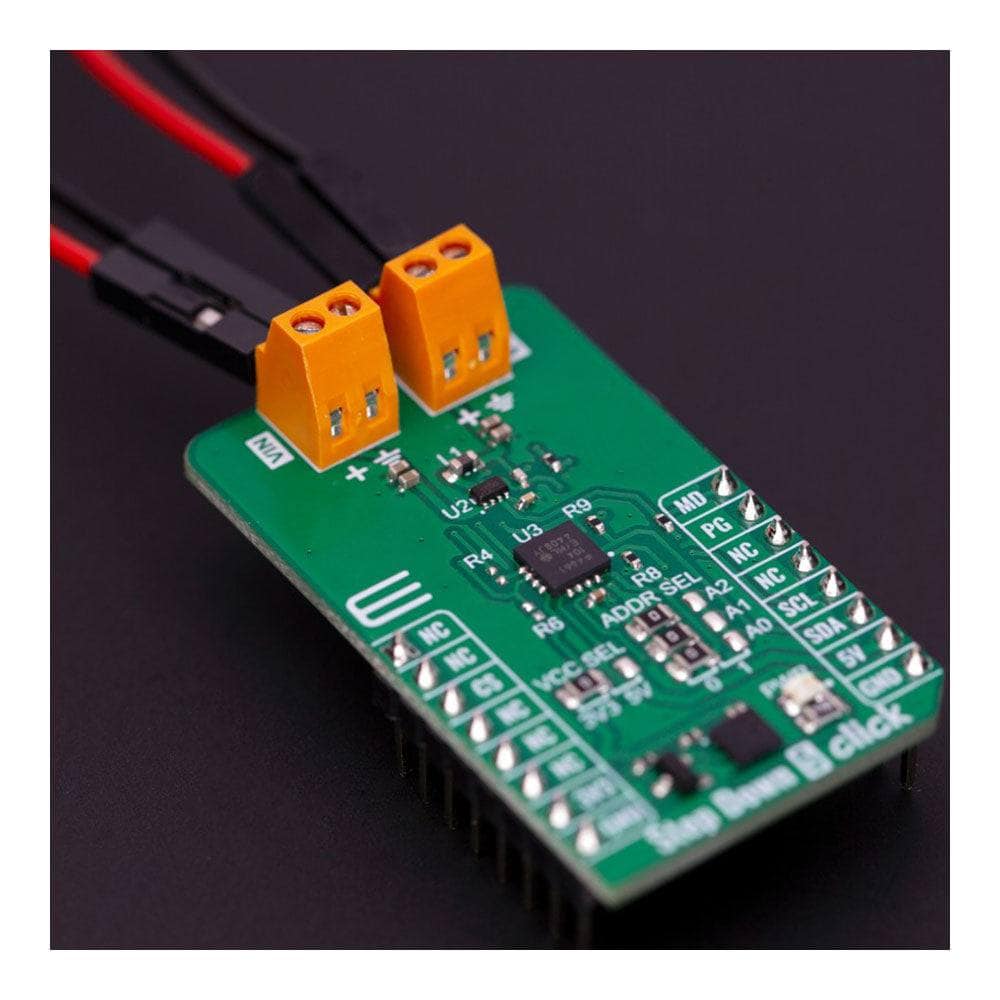
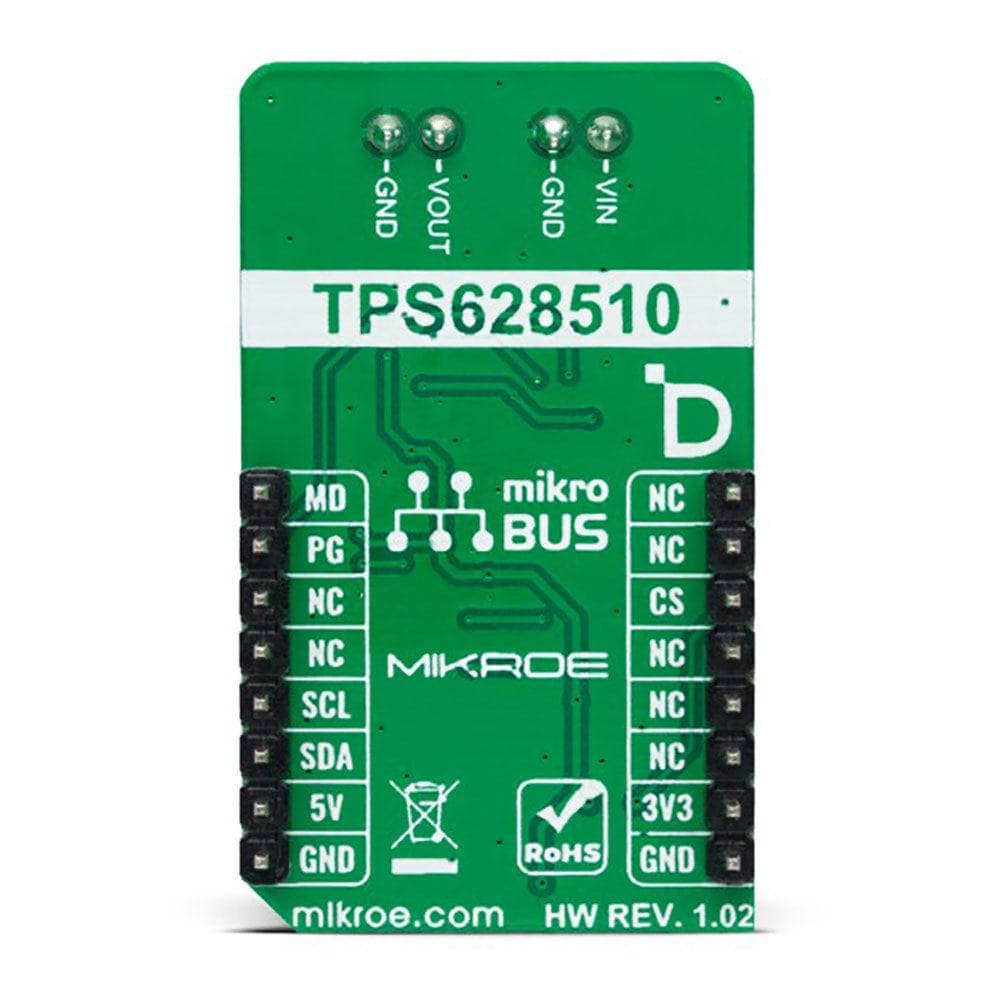
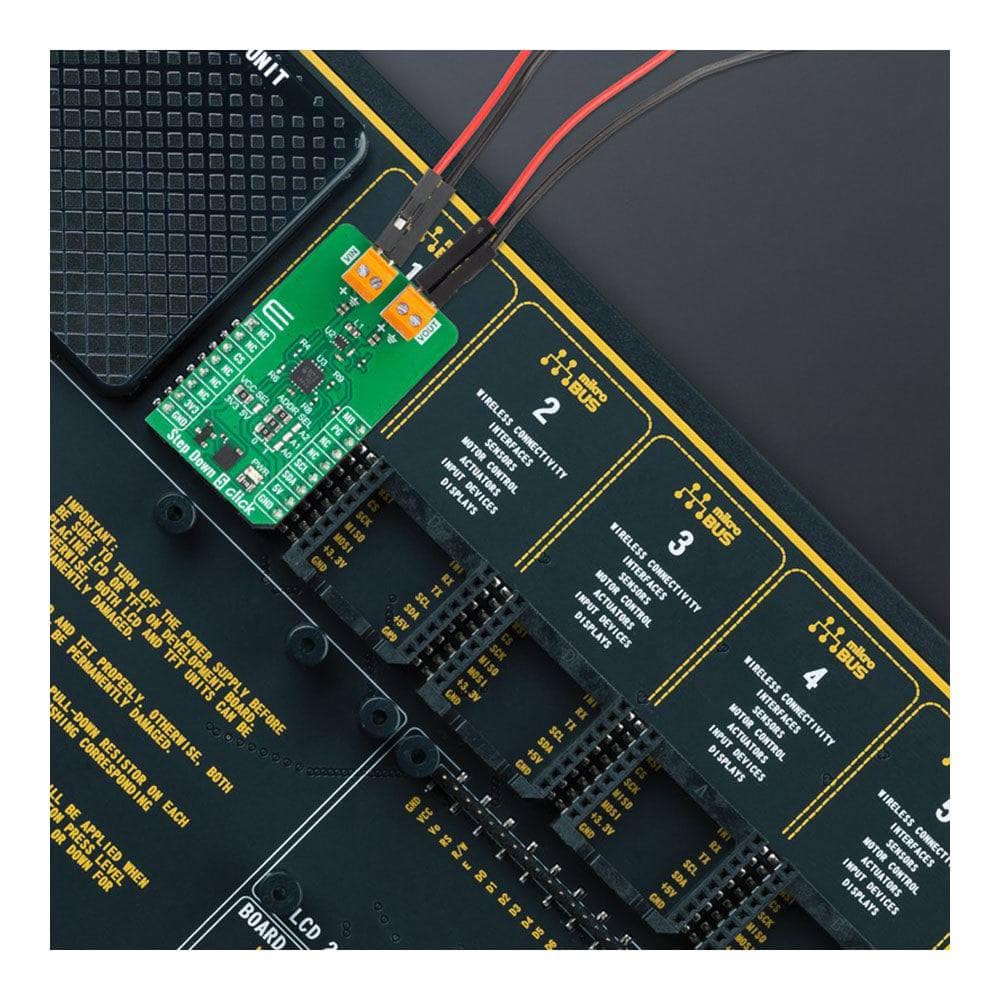
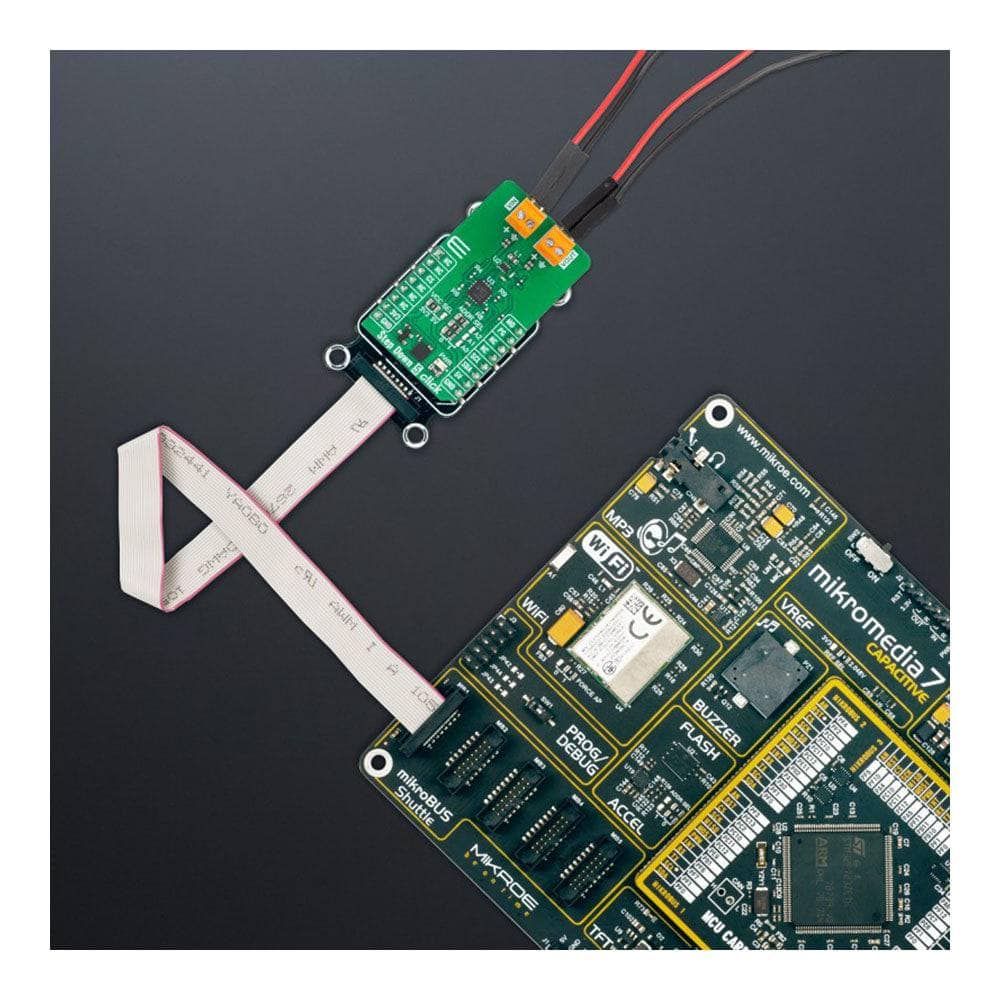
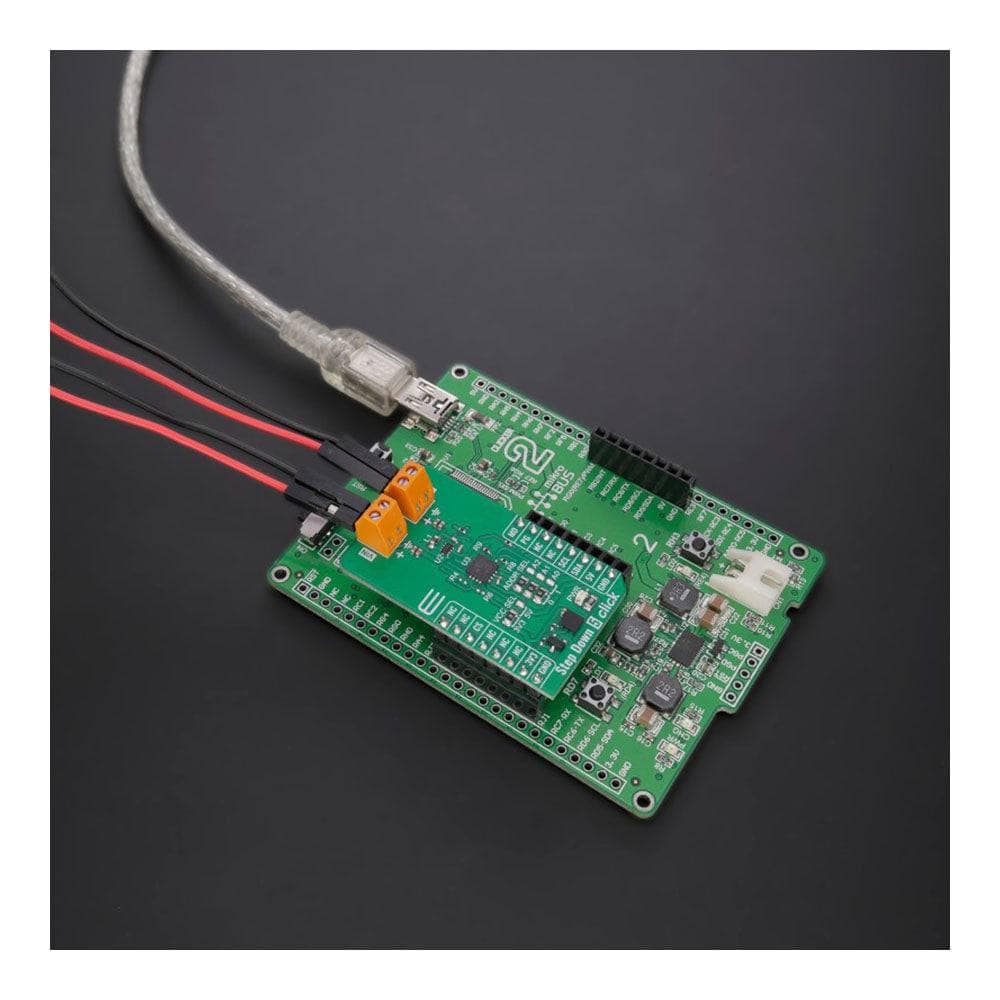
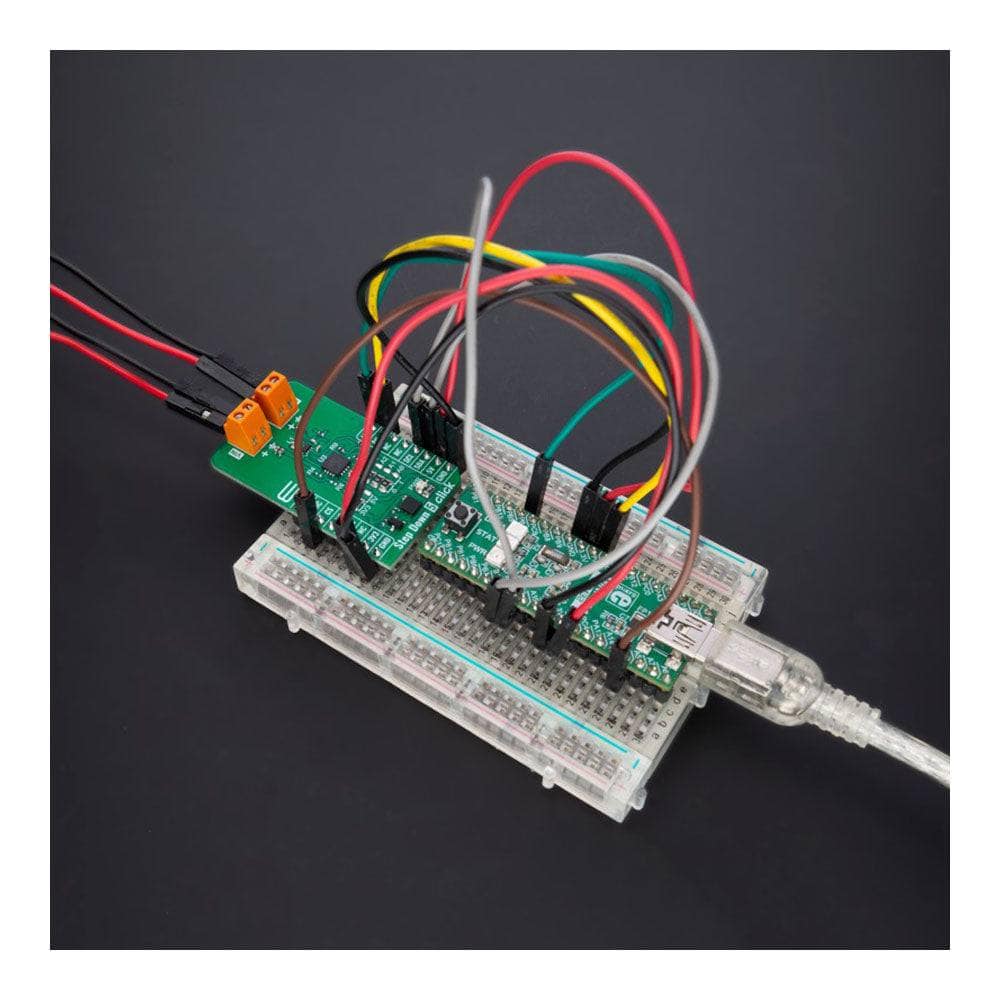
Key Features
Overview
Introducing the Step Down 5 Click Board™: High-Efficiency Voltage Conversion Made Easy
Discover the power of the Step Down 5 Click Board™, a compact and efficient add-on board that effortlessly converts higher voltage levels to lower ones. This incredible board features the TPS628510, a top-notch synchronous step-down DC/DC converter from Texas Instruments. Specifically designed for applications where high efficiency is essential, the TPS628510 delivers up to 500mA output current and operates with input voltages ranging from 2.7V to 6V.
Advanced Features for Optimal Performance
Experience the flexibility of the Step Down 5 Click Board™ with its 2.25MHz fixed switching frequency, selectable forced-PWM or PWM/PFM mode of operation, and adjustable output voltage from 0.6V to 5.5V, all set via an I2C-configurable digital potentiometer. Moreover, the board features a Power Good signal to indicate a stabilized output voltage, ensuring your voltage conversion is accurate and reliable.
Perfect for a Wide Range of Applications
From automation and control applications to industrial sensors, test and measurement equipment, and portable low-power devices, the Step Down 5 Click Board™ is the perfect solution for all your power conversion needs.
Seamless Integration with mikroSDK
Supported by a mikroSDK-compliant library, the Step Down 5 Click Board™ simplifies software development with a suite of functions designed for your convenience. As a fully tested product, this Click board™ is ready to be used with any system equipped with the mikroBUS™ socket, making voltage conversion easier than ever before.
Downloads
Einführung des Step Down 5 Click Board™: Hocheffiziente Spannungsumwandlung leicht gemacht
Entdecken Sie die Leistung des Step Down 5 Click Board™, einer kompakten und effizienten Zusatzplatine, die mühelos höhere Spannungspegel in niedrigere umwandelt. Diese unglaubliche Platine verfügt über den TPS628510, einen erstklassigen synchronen Abwärts-DC/DC-Wandler von Texas Instruments. Der TPS628510 wurde speziell für Anwendungen entwickelt, bei denen hohe Effizienz unerlässlich ist. Er liefert bis zu 500 mA Ausgangsstrom und arbeitet mit Eingangsspannungen von 2,7 V bis 6 V.
Erweiterte Funktionen für optimale Leistung
Erleben Sie die Flexibilität des Step Down 5 Click Board™ mit seiner festen Schaltfrequenz von 2,25 MHz, dem wählbaren Betriebsmodus Forced-PWM oder PWM/PFM und der einstellbaren Ausgangsspannung von 0,6 V bis 5,5 V, alles eingestellt über ein I2C-konfigurierbares digitales Potentiometer. Darüber hinaus verfügt die Platine über ein Power Good-Signal, um eine stabilisierte Ausgangsspannung anzuzeigen und sicherzustellen, dass Ihre Spannungsumwandlung genau und zuverlässig ist.
Perfekt für eine breite Palette von Anwendungen
Von Automatisierungs- und Steuerungsanwendungen über Industriesensoren und Test- und Messgeräte bis hin zu tragbaren Geräten mit geringem Stromverbrauch ist das Step Down 5 Click Board™ die perfekte Lösung für alle Ihre Anforderungen an die Stromumwandlung.
Nahtlose Integration mit mikroSDK
Unterstützt durch eine mikroSDK-kompatible Bibliothek vereinfacht das Step Down 5 Click Board™ die Softwareentwicklung mit einer Reihe von Funktionen, die für Ihren Komfort entwickelt wurden. Als vollständig getestetes Produkt ist dieses Click Board™ für den Einsatz mit jedem System bereit, das mit der mikroBUS™-Buchse ausgestattet ist, wodurch die Spannungsumwandlung einfacher als je zuvor wird.
| General Information | |
|---|---|
Part Number (SKU) |
MIKROE-5572
|
Manufacturer |
|
| Physical and Mechanical | |
Weight |
0.02 kg
|
| Other | |
Country of Origin |
|
HS Code Customs Tariff code
|
|
EAN |
8606027384622
|
Warranty |
|
Frequently Asked Questions
Have a Question?
-
What software development support is available for the Step Down 5 Click Board™?
The Step Down 5 Click Board™ is supported by a mikroSDK-compliant library, which includes functions that simplify software development.
-
What applications is the Step Down 5 Click Board™ suitable for?
The Step Down 5 Click Board™ is suitable for power conversion solutions in various applications, including automation and control, industrial sensors, test and measurement equipment, and portable low-power devices.
-
What are the features of the Step Down 5 Click Board™?
The Step Down 5 Click Board™ has several features, including: 1) The ability to convert higher voltages into lower voltages 2) A TPS628510 DC/DC converter 3) The ability to provide up to 500mA output current 4) Input voltage ranging from 2.7V to 6V 5) Fixed switching frequency of 2.25MHz 6) Selectable output voltage from 0.6V to 5.5V 7) Power Good signal to indicate stabilized output voltage
-
What is the TPS628510?
The TPS628510 is a DC/DC converter from Texas Instruments that can provide up to 500mA output current with an input voltage ranging from 2.7V to 6V. It is specifically designed for applications where high efficiency is crucial and has a switching frequency of 2.25MHz.
-
What is the Step Down 5 Click Board™?
The Step Down 5 Click Board™ is an add-on board that can convert a higher voltage into a lower voltage level. It features the TPS628510, a high-efficiency, easy-to-use, synchronous step-down DC/DC converter from Texas Instruments.

